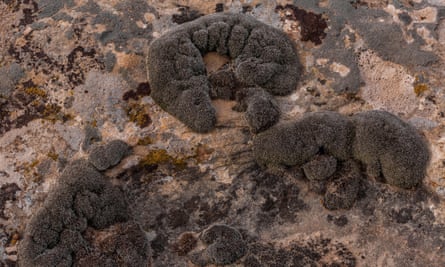Scientists rep desolate tract moss ‘that can live to advise the tale on Mars’ – Guardian

While Matt Damon relied on potatoes cultivated in crew biowaste to live to advise the tale within the hit film The Martian, researchers command it’s miles a humble desolate tract moss that can also fair describe pivotal to setting up life on Mars.
Scientists in China command they’ve stumbled on Syntrichia caninervis – a moss present in areas including Antarctica and the Mojave desolate tract – is able to withstand Mars-love prerequisites, including drought, high ranges of radiation and indecent frosty.

The crew command their work is the predominant to detect the survival of entire plants in such an surroundings, whereas it furthermore specializes within the probability of growing plants within the enviornment’s ground, in put of in greenhouses.
“The piquant insights bought in our eye lay the foundation for outer house colonisation the exhaust of naturally chosen plants tailored to indecent stress prerequisites,” the crew write.
Prof Stuart McDaniel, an expert on moss at the College of Florida and who became once not angry relating to the eye, suggested the foundation had deserves.
“Cultivating terrestrial plants is a crucial fragment of any long-term house mission on account of plants successfully flip carbon dioxide and water into oxygen and carbohydrates – basically the air and food that humans must live to advise the tale. Barren region moss will not be fit to be eaten, however it could possibly probably presumably present other crucial services in house,” he acknowledged.
Dr Agata Zupanska, of the SETI Institute, agreed, noting moss could presumably abet enrich and transform the rocky field subject stumbled on on the bottom of Mars to enable other plants develop.
“In every other case, moss will not be tasty and doesn’t build a welcome boost to the salad,” she acknowledged.
Writing within the journal The Innovation, researchers in China list how the desolate tract moss not completely survived however without note recovered from almost total dehydration. It became once furthermore ready to regenerate below fashioned enhance prerequisites after spending up to 5 years at -80C and up to 30 days at -196C, and after exposure to gamma rays, with doses of around 500Gy even promoting contemporary enhance.
The crew then created a role-up that had identical pressures, temperatures, gases and UV radiation to Mars. It stumbled on the moss survived on this Mars-love surroundings, and became once ready to regenerate below fashioned enhance prerequisites, even after seven days of exposure. The crew furthermore neatly-known plants that were dried sooner than such exposure faired higher.
“Seeking to the long term, we inquire of that this promising moss could presumably presumably be introduced to Mars or the moon to extra take a look at the probability of plant colonisation and enhance in outer house,” the researchers write.
McDaniel neatly-known most plants cannot withstand the stresses of house breeze.
“This paper is thrilling on account of it shows that desolate tract moss survives short exposures to a pair of the stresses which could presumably be likely to be stumbled on on a outing to Mars, including very high ranges of radiation, very frosty temperatures, and intensely low oxygen ranges,” he acknowledged.
But he added the research had boundaries.
“These experiments signify a crucial first step, however they attain not present that the moss can also fair furthermore be a indispensable offer of oxygen below Martian prerequisites, nor attain they present that the desolate tract moss could presumably reproduce and proliferate within the Martian context,” McDaniel acknowledged.
Zupanska added that, amongst other complications, the eye didn’t take a look at the impression of particulate radiation.
“In my behold, we are getting shut to growing plants in extraterrestrial greenhouses, and moss surely has a put in these,” she acknowledged. “Implying that moss, or every other pioneering species, is able to terraform Mars, or every other outer planet, is an exaggeration.”
Dr Wieger Wamelink of Wageningen College, furthermore raised concerns, including that temperatures on the red planet hardly ever get above freezing, making beginning air plant enhance not possible, whereas the contemporary eye didn’t exhaust Mars-love soil.
“The mosses were handled below Mars situations for a maximum of various days and then regrown below Earth prerequisites on sand,” he acknowledged. “This, unnecessary to reveal, doesn’t present the least bit that they are going to develop below Mars prerequisites.”
On the opposite hand, Prof Edward Guinan of Villanova College within the US described the eye as impressive.
“This extremotolerant moss can also fair furthermore be a promising pioneer plant for Mars colonisation,” he acknowledged, despite the undeniable truth that he neatly-known the moss would want water to develop.
“We now indulge in a long blueprint to head,” he acknowledged. “But this lowly desolate tract moss offers hope for making little portions of Mars habitable for humankind within the long term.”


